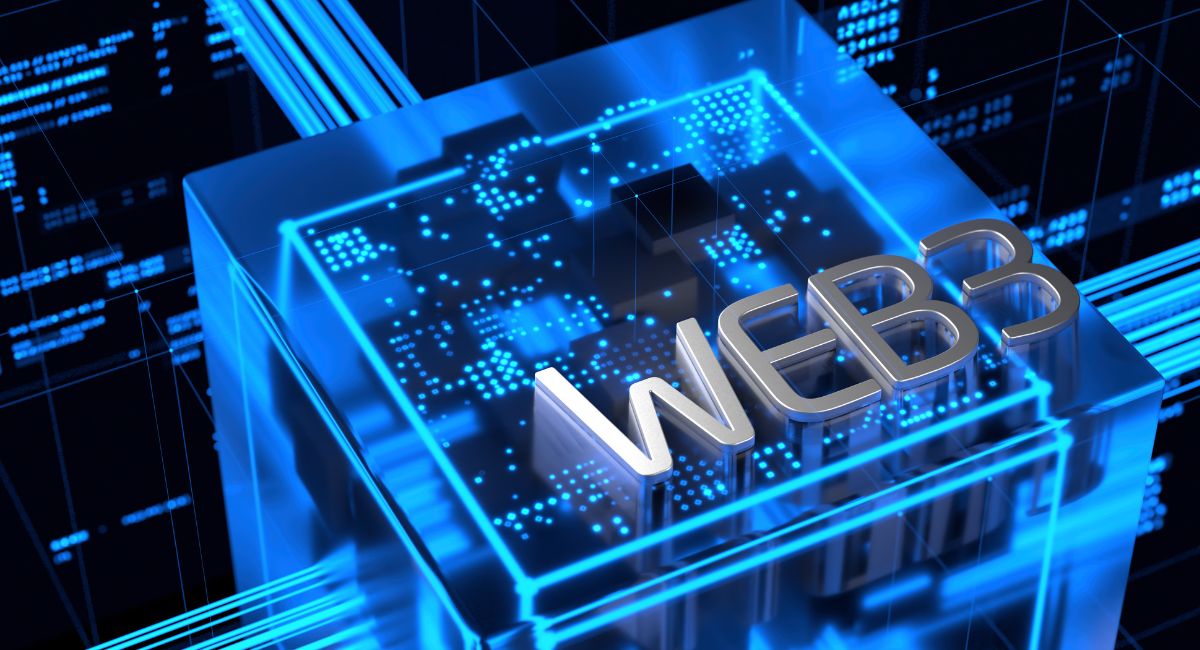Top 8 Most Important Web3 Value Propositions Offered By Blockchain

Web3 represents the next evolutionary phase of the internet, transforming it into a decentralized and user-centric ecosystem. Unlike its predecessors, Web 1.0 and Web 2.0, which were characterized by centralized control and data silos, Web 3.0 leverages blockchain technology, decentralized protocols, and cryptographic principles to prioritize user privacy, data ownership, and autonomy.
At the heart of Web 3.0 is the concept of decentralization, which empowers users by giving them greater control over their data and digital interactions. Instead of relying on intermediaries like social media platforms or centralized servers to store and manage information, users can interact directly with decentralized applications (DApps) and peer-to-peer networks, ensuring privacy and security.
Blockchain technology plays a pivotal role in Web 3.0, serving as a tamper-proof and transparent ledger for recording transactions and data interactions. Smart contracts, which are self-executing agreements coded on the blockchain, enable trustless transactions and automate processes, eliminating the need for intermediaries and reducing transaction costs.
Moreover, Web 3.0 promotes interoperability among different platforms and applications, allowing seamless data sharing and collaboration across the decentralized ecosystem. Standards like the InterPlanetary File System (IPFS) facilitate decentralized storage and distribution of data, ensuring resilience and accessibility.
Decentralized autonomous organizations (DAOs) represent another key aspect of Web 3.0, enabling communities to govern themselves democratically and transparently. Through decentralized governance mechanisms, stakeholders can collectively make decisions and allocate resources without relying on centralized authorities.
Overall, Web 3.0 holds immense promise in revolutionizing the internet, fostering a more equitable, transparent, and resilient digital ecosystem. By embracing decentralization, privacy, and cryptographic security, Web 3.0 empowers individuals, fosters innovation, and reshapes the internet into a more inclusive and democratic infrastructure. As the decentralized web continues to evolve, it has the potential to address longstanding challenges and unlock new opportunities for collaboration, creativity, and economic empowerment on a global scale.
Also, read- What Makes NFT Projects Interesting For Web3: Here Top 5 Interesting NFT Projects
Web3 in blockchain

Web3, often synonymous with the decentralized web, represents a paradigm shift in the way we interact with the internet. At its core, Web 3.0 leverages blockchain technology as a foundational pillar to create a more transparent, secure, and user-centric digital environment.
Blockchain technology serves as the backbone of Web3, providing a decentralized and immutable ledger for recording transactions and data interactions. Unlike traditional centralized systems, where data is stored on a single server controlled by a central authority, blockchain distributes data across a network of computers (nodes), ensuring transparency, security, and resilience against censorship or tampering.
One of the key features of blockchain in Web3 is its ability to enable peer-to-peer transactions without the need for intermediaries. Through smart contracts, which are self-executing agreements coded on the blockchain, parties can automate transactions and enforce contractual terms without relying on trusted third parties. This not only streamlines processes but also reduces costs and eliminates the risk of fraud or manipulation.
Moreover, blockchain technology in Web3 enhances data privacy and ownership. Users have greater control over their data, which is encrypted and stored securely on the blockchain. Decentralized identity solutions enable users to manage their digital identities and control access to their personal information, mitigating the risks associated with centralized data storage and identity theft.
Blockchain also promotes transparency and trust in Web3 by providing a verifiable and auditable record of transactions. Each transaction on the blockchain is cryptographically linked to previous transactions, creating an immutable audit trail that can be verified by anyone with access to the network. This transparency fosters trust among users and reduces the need for intermediaries to validate transactions.
Furthermore, blockchain technology facilitates interoperability among different platforms and applications within the Web 3.0 ecosystem. Standards like the InterPlanetary File System (IPFS) enable decentralized storage and sharing of data, while cross-chain interoperability protocols allow for seamless communication and data exchange between different blockchains. This interoperability promotes collaboration and innovation across diverse decentralized networks.
Decentralized finance (DeFi) is a prime example of how blockchain is revolutionizing finance in Web 3.0. Through DeFi protocols built on blockchain, users can access a wide range of financial services, including lending, borrowing, trading, and asset management, without relying on traditional financial intermediaries. This democratizes access to financial services, fosters financial inclusion, and reduces barriers to entry for individuals worldwide.
In conclusion, blockchain technology is integral to developing and advancing Web 3.0, enabling decentralization, transparency, security, and interoperability. As Web3 continues to evolve, blockchain will play a central role in reshaping the Internet into a more equitable, transparent, and resilient digital ecosystem.
Here are some examples of Web3 applications utilizing blockchain technology:

-
Decentralized Finance (DeFi): DeFi platforms leverage blockchain to offer financial services such as lending, borrowing, and trading without the need for traditional financial intermediaries. Examples include lending protocols like Compound and Aave, decentralized exchanges (DEXs) like Uniswap and SushiSwap, and yield farming platforms.
-
Non-Fungible Tokens (NFTs): NFTs are unique digital assets representing ownership of a particular item or piece of content, such as art, collectibles, and virtual real estate. Blockchain technology, particularly Ethereum, is used to create, buy, sell, and trade NFTs securely and transparently. Platforms like OpenSea and Rarible facilitate NFT trading and marketplace creation.
-
Decentralized Identity: Blockchain-based identity solutions provide users with self-sovereign digital identities that they control without relying on centralized authorities. Projects like uPort and Civic use blockchain to verify and authenticate user identities securely, enabling privacy-enhanced identity management.
-
Decentralized Autonomous Organizations (DAOs): DAOs are organizations governed by smart contracts on the blockchain, allowing members to collectively make decisions and manage resources without central authority. Examples include DAOs for funding community projects (e.g., MolochDAO) or governing decentralized protocols (e.g., MakerDAO).
-
Decentralized Storage: Decentralized storage networks use blockchain technology to incentivize users to contribute storage space and bandwidth, creating a distributed and censorship-resistant storage infrastructure. Projects like Filecoin and IPFS enable users to store and retrieve data securely without relying on centralized servers.
-
Blockchain Gaming: Blockchain is used in gaming to create provably rare in-game assets, enable true ownership of virtual items, and facilitate player-driven economies. Games like Axie Infinity and Decentraland leverage blockchain to create immersive gaming experiences where players can buy, sell, and trade digital assets.
-
Supply Chain Traceability: Blockchain is used to enhance transparency and traceability in supply chains by recording product information, transactions, and provenance data on an immutable ledger. Companies like IBM Food Trust and VeChain use blockchain to track the journey of goods from production to consumption, ensuring authenticity and quality.
-
Smart Contracts: Smart contracts are self-executing agreements coded on the blockchain, automatically enforcing terms and conditions when predefined conditions are met. They are used in various industries for tasks such as escrow services, real estate transactions, and insurance claims processing.
Web3 is growing but women are grossly underrepresented. To address this, @web3ladies is sponsoring a 4-month virtual bootcamp for early career women interested in:
— Omoalhaja (@omoalhajaabiola) February 20, 2024
– data analytics
– blockchain
– software development
– Data engineering
You will be tutored and mentored by… pic.twitter.com/oHwVHmlAFd
The most important value propositions of Web3 offered by blockchain include:

- Decentralization: Blockchain technology allows for decentralized data storage and transaction verification, reducing reliance on central authorities and intermediaries. This decentralization enhances security, transparency, and censorship resistance while promoting user autonomy and data ownership.
- Transparency: Blockchain provides a transparent and immutable ledger of transactions, accessible to all participants in the network. This transparency fosters trust among users and ensures the integrity and authenticity of data stored on the blockchain.
- Security: Blockchain utilizes cryptographic techniques to secure data and transactions, protecting against unauthorized access, fraud, and tampering. The consensus mechanism ensures that transactions are validated by the network, enhancing security and trust in the system.
- Trustless Transactions: Blockchain enables trustless transactions through smart contracts, which automatically execute and enforce agreements when predefined conditions are met. By eliminating the need for intermediaries, blockchain facilitates peer-to-peer transactions, reducing costs and increasing efficiency.
- Ownership and Control: Blockchain empowers users with ownership and control over their digital assets and identities. With private keys and digital signatures, users can securely manage and transfer their assets without relying on third parties, promoting sovereignty and autonomy.
- Interoperability: Blockchain promotes interoperability by facilitating the exchange of data and assets between different blockchain networks and protocols. This interoperability allows for seamless communication and collaboration across diverse blockchain ecosystems, fostering innovation and scalability.
- Innovation: Blockchain fosters innovation by providing a platform for building decentralized applications (DApps) and protocols. With programmable smart contracts and open-source development, blockchain enables developers to create innovative solutions for various industries, from finance and supply chain to healthcare and gaming.
- Financial Inclusion: Blockchain promotes financial inclusion by democratizing access to financial services, especially in underserved regions. Through decentralized finance (DeFi) applications, individuals can access banking, lending, and investment services without intermediaries, reducing barriers to entry and expanding financial access.
Overall, the combination of decentralization, transparency, security, trustless transactions, ownership and control, interoperability, innovation, and financial inclusion makes blockchain a powerful enabler of Web3, transforming the internet into a more decentralized, transparent, and inclusive digital ecosystem.
Conclusion
In conclusion, blockchain technology offers a myriad of value propositions that are instrumental in shaping the landscape of Web3. Its core principles of decentralization, transparency, security, and trustless transactions form the foundation upon which the decentralized web is built. By providing users with greater control over their data and assets, blockchain promotes autonomy, sovereignty, and ownership in the digital realm.
Furthermore, blockchain’s interoperability and innovation capabilities drive collaboration and creativity, fostering the development of decentralized applications and protocols that cater to diverse use cases across industries. This fosters a more inclusive and accessible digital ecosystem, particularly through decentralized finance (DeFi), which expands financial access and empowers individuals worldwide.
Overall, blockchain’s role in Web3 extends beyond technology; it represents a paradigm shift toward a more equitable, transparent, and user-centric Internet. As blockchain continues to evolve and integrate with other emerging technologies, its impact on Web3 is expected to grow, unlocking new opportunities for innovation, collaboration, and societal transformation. Thus, blockchain stands as a cornerstone of Web3, enabling the realization of a decentralized future where individuals have greater autonomy and agency in their digital interactions.



























































